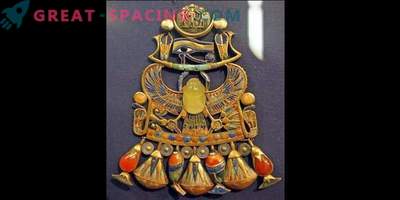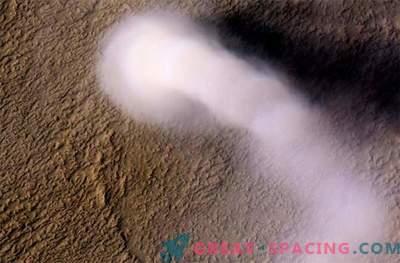
A cluster of meteorites struck Mars, creating a mortal danger for future colonists.
The earth has a thick atmosphere that protects against everything except the largest stones. But Mars is deprived of such luxury, which creates another deadly risk for the presence of people on it. Take, for example, a recent observation from NASA's Mars Reconnaissance Orbiter. From a distance, a small group of dark spots on a pale landscape was the only sign of meteorite exposure. But with the increase it became clear that this was not one, but dozens of strikes around a small area in the Farsid region.
Using Mars Context Camera (CTX), scientists determined that it happened between 2008-2014. True nature became apparent on October 4, 2016, when viewed with the High-Resolution Imaging Science Experiment (HiRISE) camera. Two large impact craters are complemented by 30 smaller ones, demonstrating that the meteorite disintegrated in the Martian atmosphere and crashed to the surface with debris.
MRO does not stop surveillance, noting long-term changes in fresh areas of impact on Mars. This will help not only to determine the frequency of meteoric impacts, but also provides natural means for mining material below the surface. That is, we will be able to observe those minerals that were not subjected to severe weather conditions (as they lay under the bark). In addition, by observing long-term changes in dusty material around the explosion sites, we can learn more information about surface winds and the movement of small particles. It is worth noting that the dark areas surrounding areas of craters are not only the result of ejection. During the impact of meteorites, the affected air blew off surface dust, leaving a darker material. Analyzing this picture, planetary scientists will be able to determine the direction of the fall of the meteorite. In the upper image, a meteorite fell from the south.

View of the Farsis region from the MRO camera, where the meteorite cluster was first discovered
From the point of view of science, it is not only interesting, but also plays the role of an important warning. Now everything says that in the 2030s we will still launch a human mission to Mars (be it China or NASA with the SpaceX interplanetary vehicle). And if everything goes well, then we will be able to establish permanent colonies there. But we are waiting for a harsh reception, to which we must be ready.
The Martian atmosphere is about 100 times thinner than ours, and meteors it flies to it more. In this situation, the atmosphere is not thick enough to burn cosmic stones, but it is enough to break them into small pieces. And this means that there will be not one blow, but a whole hail.
For colonists living in sealed habitats on the surface, this is very dangerous. After all, they simply can cover with explosive shells, from which you can not dodge. There are no scripts to solve this problem yet.











































